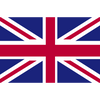Curtain Fixing Hardware

Industrial Curtain Track
Industrial track systems, specifically steel C-tracks, are commonly used in various industrial settings, including warehouses, workshops, manufacturing facilities, and assembly lines. These track systems are designed to facilitate the movement of various equipment, curtains, doors, and other components within the industrial space. Here are some key features and benefits of steel C-tracks:
Request a QuoteCeiling Mounted Track Fixings
Our ceiling-mounted track fixings are an ideal solution for creating industrial curtains. This track will drop your curtains by 90mm, while also allowing for an 80mm bleed on the floor to keep it weighted. An optional PVC pelmet can also be supplied for an airtight system. Choose our track fixings for a secure and reliable industrial curtain solution.
- Ceiling Brackets: Ceiling brackets are one of the most common types of fixings used to mount tracks to the ceiling. They are usually L-shaped brackets made from metal or other sturdy materials. The track is secured to the vertical side of the bracket, while the horizontal side attaches to the ceiling surface using screws or bolts.
- Suspended Rods or Tubes: For certain track systems, especially those used for heavy loads or longer spans, suspended rods or tubes may be used. These rods or tubes are attached to the ceiling at specific intervals, and the track is then hung from them using hooks or connectors.
- Threaded Rods and Eye Nuts: Threaded rods or eye nuts are sometimes used as an alternative to brackets. The threaded rods are secured to the ceiling, and the track is suspended from them using the eye nuts.
- Ceiling Clips or Hangers: Ceiling clips or hangers are specialized fixings designed to attach tracks to drop ceilings or other unique ceiling types. They snap or clip onto the ceiling grid or frame and provide a point of attachment for the track.
- Ceiling Plates: Ceiling plates are flat metal or plastic plates that have holes for securing screws or bolts. They are often used to distribute the weight of the track across a broader area of the ceiling.
- Expansion Anchors: Expansion anchors are used when mounting tracks to concrete or masonry ceilings. These anchors expand when tightened, creating a secure attachment point.
- Adhesive Fixings: In some cases, adhesive fixings are used to attach tracks to smooth ceiling surfaces. These may be suitable for lightweight or temporary installations.
- Safety Components: Depending on the type of track and its application, safety components such as end stops, ceiling buffers, or anti-lift devices may be used to enhance safety and prevent accidental track dislodgment.


Wall Mounted Track Fixings
Our wall-mounted track is designed with an easy installation process. Screws can be securely and quickly fastened to the front fascia with an impact driver. To ensure stability, mountings should be spaced 1.5m apart. When using wall mounts, allow a 10mm bleed from the mark to the ground for a more precise fit.
- Wall Brackets: Wall brackets are the most common type of fixings used to mount tracks to the wall. These brackets are typically L-shaped or U-shaped and made from metal or sturdy materials. The track is secured to the vertical side of the bracket, while the horizontal side is attached to the wall using screws or bolts.
- Wall Clips or Hangers: Similar to ceiling clips, wall clips or hangers are specialized fixings designed to attach tracks to wall-mounted grid systems or other unique wall types. They snap or clip onto the wall frame and provide a point of attachment for the track.
- Wall Anchors: Wall anchors are used when mounting tracks to drywall, plasterboard, or other hollow wall materials. These anchors expand or spread out behind the wall surface when tightened, creating a secure attachment point.
- Wall Plates: Wall plates are flat metal or plastic plates with holes for securing screws or bolts. They are often used to distribute the weight of the track across a broader area of the wall, providing added stability.
- Suspended Rods or Tubes: For some track systems, particularly heavy-duty or longer spans, suspended rods or tubes may be used. These rods or tubes are attached to the wall at specific intervals, and the track is then hung from them using hooks or connectors.
- Threaded Rods and Eye Nuts: Similar to ceiling-mounted tracks, threaded rods or eye nuts can be used to suspend wall-mounted tracks. The threaded rods are attached to the wall, and the track is hung from them using the eye nuts.
- Adhesive Fixings: Adhesive fixings can be used to attach lightweight tracks to smooth wall surfaces. These may be suitable for temporary installations or situations where drilling is not desired.
- Safety Components: Depending on the type of track and its application, safety components such as end stops, wall buffers, or anti-lift devices may be used to enhance safety and prevent accidental track dislodgment.
 Free Shipping On All UK Orders
Free Shipping On All UK Orders